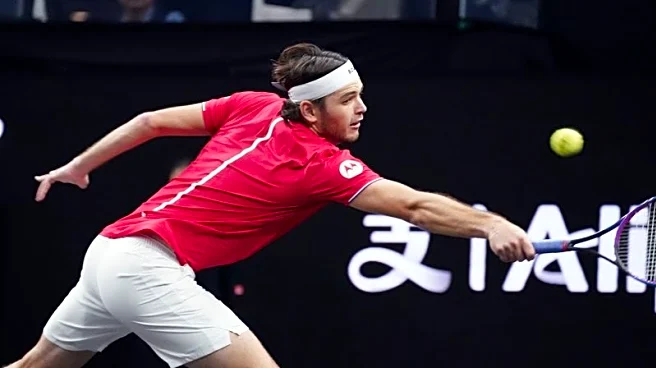What's Happening?
The Laver Cup 2025 concluded with Team World securing a victory over Team Europe, led by Carlos Alcaraz, with a score of 15-9. Taylor Fritz played a pivotal role by defeating Alexander Zverev in the final match. The event, held in San Francisco, was marked by high drama and notable appearances, including Steph Curry and Roger Federer. Laver Cup chairman Tony Godsick discussed potential future venues, suggesting a rotation among Grand Slam sites, which would leverage existing facilities and retractable roofs for optimal scheduling. The event will return to London's O2 Arena in 2026, marking its first repeat city venue.
Why It's Important?
The Laver Cup's success highlights its growing significance in the tennis world, offering substantial prize money and prestige. The discussion of future venues at Grand Slam sites could enhance the event's profile and logistical efficiency. The victory by Team World, despite being underdogs, underscores the competitive nature of the tournament. The presence of high-profile figures like Steph Curry and Roger Federer adds to the event's allure, potentially increasing its appeal to broader audiences and sponsors. The strategic venue choices could impact local economies and tourism, especially in cities hosting the event.
What's Next?
The Laver Cup will return to London's O2 Arena in 2026, continuing its tradition of rotating venues. The proposal to host the event at Grand Slam sites may lead to further discussions and negotiations among stakeholders. Players and teams will prepare for upcoming tournaments, with some having commitments in Asia shortly after the Laver Cup. The event's organizers may explore additional ways to enhance its appeal and logistical execution, potentially influencing future tennis event planning.
Beyond the Headlines
The Laver Cup's format and venue discussions reflect broader trends in sports event management, emphasizing the importance of infrastructure and global appeal. The involvement of figures like John McEnroe and Andre Agassi highlights the event's cultural significance and its role in promoting tennis history and legacy. The potential shift to Grand Slam venues could set a precedent for other sports events seeking to leverage existing facilities for efficiency and prestige.











